<< Previous | Displaying results 4476-4500 of 6769 for "" | Next >>
Roma (Gypsies) celebrate with music, dancing, and singing in the mountains near Zagreb, Yugoslavia. During World War II, Roma in Yugoslavia were exterminated by Croatian nationalists and by the Germans.
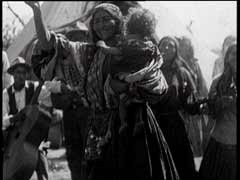
In July 1947, 4,500 Jewish refugees left displaced persons camps in Germany and boarded the "Exodus 1947" in France. They attempted to sail to Palestine although they did not have permission from British authorities to land. The British intercepted the ship and forcibly returned the Jewish refugees to Germany. Here, Jews from the "Exodus 1947" are confined in Poppendorf, Germany. The plight of the "Exodus" passengers became a symbol of the struggle for open Jewish emigration to Palestine.
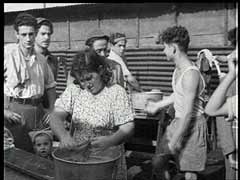
In July 1947 in France, 4,500 Jewish refugees from displaced persons camps in Germany boarded the "Exodus 1947" and attempted to sail (without permission to land) to Palestine, which was under British mandate. The British intercepted the ship off the coast and forced it to anchor in Haifa, where British soldiers removed the Jewish refugees. After British authorities failed to force France to accept the refugees, the refugees were returned to DP camps in Germany. The plight of the "Exodus" passengers became…
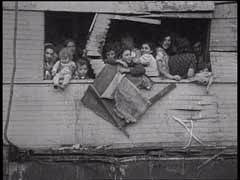
In July 1947, 4,500 Jewish refugees left displaced persons camps in Germany and boarded the "Exodus 1947" in France. They attempted to sail to Palestine without, however, having British permission to land. The British intercepted the ship and forcibly returned the refugees to Germany. This footage shows a protest in the Bergen-Belsen displaced persons camp in the British occupation zone of Germany. The protesters denounced British treatment of the "Exodus 1947" passengers. The plight of the "Exodus"…
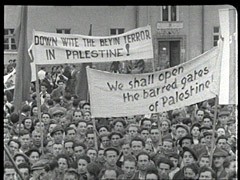
France signed an armistice with Germany on June 22, 1940, recognizing the right of German authorities to oversee the French administration. Further, German military authorities held jurisdiction over matters of internal security. In this footage, a German military court in Paris tries French citizens charged with resisting measures of the military occupation. Despite harsh military justice, the Germans could not quell opposition in France, and resistance activities would reach a peak during the Allied…

Czech resistance fighters attacked Reinhard Heydrich, acting governor of the Protectorate of Bohemia and Moravia, in an ambush near Prague in May 1942. Heydrich died of his wounds on June 4, 1942. In retaliation for the attack, the Germans destroyed the village of Lidice on June 10, 1942. The Germans shot all the men in the village and deported most of the women and children to camps in Germany. This footage shows destroyed homes and German officials inspecting the remains of the village.
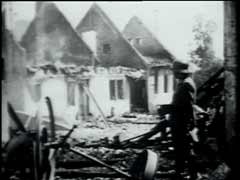
At his hidden headquarters in the mountains of Yugoslavia, Marshal Tito (Josip Broz), head of the Yugoslav Communist partisan movement, prepares his forces for battle. Women gather silk parachutes, used to drop supplies by Allied forces, for use as bandages. Partisans train, preparing to fight the Germans. At the height of the partisan war in Yugoslavia in 1943, Tito's partisans engaged some 35 Axis divisions, which otherwise might have been in service on the Italian or eastern fronts.
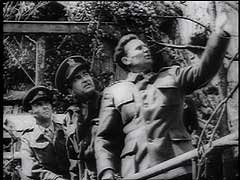
Germany invaded the Netherlands on May 10, 1940. Four days later, German planes bombed Rotterdam. The Germans tried to halt the raid on the city because Dutch authorities had agreed to negotiate the surrender of their country. However, a communications failure delayed the order halting the attack. The bombing destroyed much of the city center, leaving almost 80,000 people homeless. The Netherlands surrendered just a few hours later. On May 15, in retaliation for the bombing of Rotterdam, the British air…
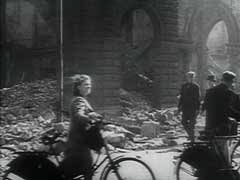
The Junkers (Ju) 87, known as the "Stuka," spearheaded the Blitzkrieg ("lightning war") attacks that were decisive in the western campaign in 1940. Stuka dive-bombers closely supported German forces on the ground. They destroyed enemy strong points, aircraft, and airfields, and spread panic in rear areas. Although slow and easily shot down by Allied fighters, the Stukas proved devastatingly effective in the German invasions of Poland and western Europe, where Germany enjoyed air superiority. Stuka…
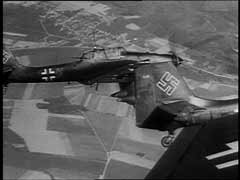
The Treaty of Versailles, imposed on defeated Germany following World War I, declared Danzig to be a free city jointly administered by Poland and the League of Nations. Germany bitterly resented the loss of this largely German city, which was also an important port on the Baltic Sea. The return of Danzig became a central feature of Adolf Hitler's foreign policy. This footage shows pro-German forces besieging a Polish garrison in Danzig's main post office. Germany annexed Danzig after the defeat of Poland…
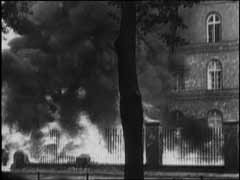
German troops entered Austria on March 12, 1938. The annexation of Austria to Germany was proclaimed on March 13, 1938. In this German newsreel footage, Austrians express overwhelming enthusiasm for the Nazi takeover of their country.
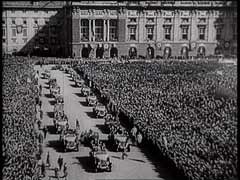
[This video is silent] An agreement signed at the Munich conference of September 1938 ceded the German-speaking Sudetenland region of Czechoslovakia to Germany. The agreement was reached between Germany, Italy, Britain, and France. Czechoslovakia was not permitted to attend the conference. In March 1939, six months after signing the Munich agreement, Hitler violated the agreement and destroyed the Czech state.
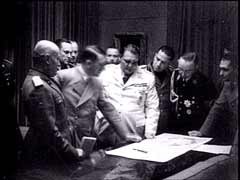
In an attempt to prevent the German annexation of Austria, Austrian chancellor Kurt von Schuschnigg called a plebiscite (referendum) on Austrian independence. On March 11, 1938, the Germans pressured Schuschnigg to cancel the plebiscite and resign. This German newsreel footage from March and April 1938 served as propaganda for the Nazi annexation of Austria. It begins with images of pro-Nazi residents in Graz expressing their opposition to Schuschnigg's plebiscite. It also includes footage after…
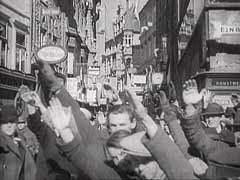
US forces under the command of General Omar Bradley reached the Ebensee forced-labor camp in Austria in early May 1945. The Germans had built Ebensee at the foot of the Austrian Alps as part of the Mauthausen system of camps. The Nazis employed Ebensee prisoners as forced laborers during the construction of an underground rocket factory. Thousands died from the harsh conditions and back-breaking labor.
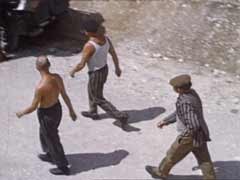
The Mauthausen concentration camp was established shortly after the German annexation of Austria (1938). Prisoners in the camp were forced to perform crushing labor in a nearby stone quarry and, later, to construct subterranean tunnels for rocket assembly factories. US forces liberated the camp in May 1945. In this footage, starving survivors of the Mauthausen concentration camp eat soup and scramble for potatoes.
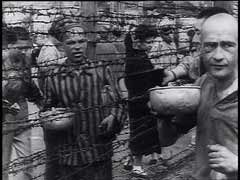
Estonian auxiliary forces assisted the German Einsatzgruppen (mobile killing units) in the mass killing of Jews and others during World War II. Ralf Gerrets and Jaan Viik were both members of the Estonian security police during the German occupation. This footage shows them during their trial, on charges of war crimes, in the Estonian Soviet Socialist Republic. The Estonian Supreme Court found both guilty and sentenced them to death in 1961.

Jews were deported from Kavala, Seres, and Drama in Bulgarian-occupied Thrace. Some 3,000 Jews were taken to Drama and herded onto trains without food or water for transport to a camp in Gorna Dzumaya. The Jews were probably then taken to the Bulgarian port of Lom on the Danube River, where they boarded ships for Vienna. From there, the Nazis deported them to the Treblinka killing center.
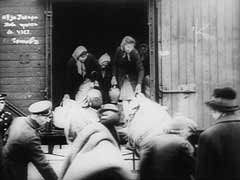
One day after France signed an armistice with Germany in June 1940, Adolf Hitler celebrated the German victory over France with a tour of Paris. Here, Hitler's train arrives in Paris. Hitler's tour included the Paris opera, the Champs-Elysees, the Arc de Triomphe, and the Eiffel Tower. After visiting Napoleon's tomb and the Sacre Coeur, Hitler left Paris. In all, Hitler spent about three hours in the city. In July, Hitler returned in triumph to Berlin, Germany.
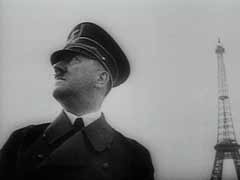
Jubilation over the liberation of Paris: US troops parade along the Champs-Elysees and French civilians celebrate. General Charles de Gaulle and General Omar Bradley review the troops.
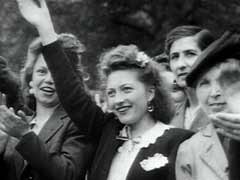
Germany's formal surrender on May 7 and VE-Day (Victory in Europe Day) on May 8, 1945, were marked by joyous celebrations all over Europe. This footage shows streets in Paris and London filled with people celebrating the unconditional Allied victory over Nazi Germany and the winning of the war in Europe.
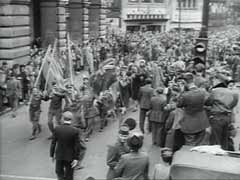
Benito Mussolini, leader of the Italian Fascist movement, was prime minister of Italy from 1922 until he was dismissed in July 1943. After the Italian armistice with the Allies in September 1943, German forces occupied northern Italy and installed Mussolini as head of a new pro-German government. In April 1945, as Allied forces advanced into northern Italy, Mussolini attempted to escape to neutral Switzerland. However, Italian partisans caught and executed him before he could reach the border. This footage…

After Italy's armistice with the Allies in September 1943, the Italian army disintegrated. The country was divided between German forces holding the northern and central regions (including Rome) and Allied forces in the south. After nine months of bitter combat, Allied forces—specifically the US Fifth Army—liberated Rome in June 1944. This footage shows scenes of celebration as troops move through Rome. It ends with a prayer by Pius XII (pope, 1939–1958).
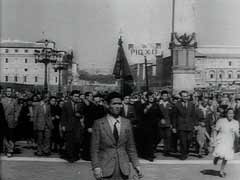
Allied forces occupied most of Germany by the end of April 1945. German forces fighting in Italy were the first to surrender unconditionally to the Allies. Representatives of the German command in Italy signed the surrender on April 29, and it became effective on May 2, 1945. Five days later, on May 7, 1945, Germany surrendered unconditionally to the western Allies, ending the war in Europe.
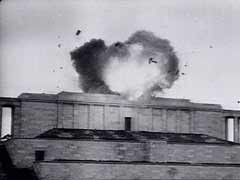
Shortly after the German occupation of Belgrade, Yugoslavia, in April 1941, the Germans forced Jews to clear the rubble caused by the heavy bombardment of the city. This German newsreel footage shows Jews clearing some of the rubble. Most of the city's Jews were later arrested and interned in camps. The German army later shot the Jewish men in retaliation for Serb resistance; the Germans killed the Jewish women and children in gas vans. Only about 2,200 Jews of Belgrade returned to the city after the war.
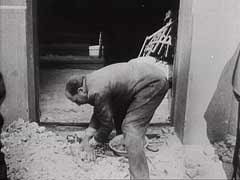
The Ustase were pro-German Croatian fascists. After the Axis invasion and partition of Yugoslavia in April 1941, the Germans established a dependent Croatian state. Led by Ante Pavelic, the Croatian regime began a genocidal campaign against minority groups and killed hundreds of thousands of Serbs and tens of thousands of Jews in Croatia. This possibly staged Ustase footage shows Ustase paramilitary forces rounding up villagers in rural Croatia. In May 1945, Yugoslav partisans under Marshal Tito--with…
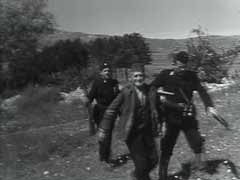
We would like to thank Crown Family Philanthropies, Abe and Ida Cooper Foundation, the Claims Conference, EVZ, and BMF for supporting the ongoing work to create content and resources for the Holocaust Encyclopedia. View the list of donor acknowledgement.